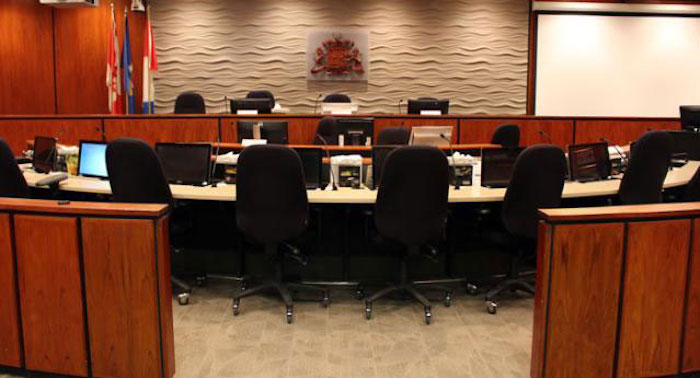MacDonald Laurier Institute
Bureaucrats should not be arbiters of our online world
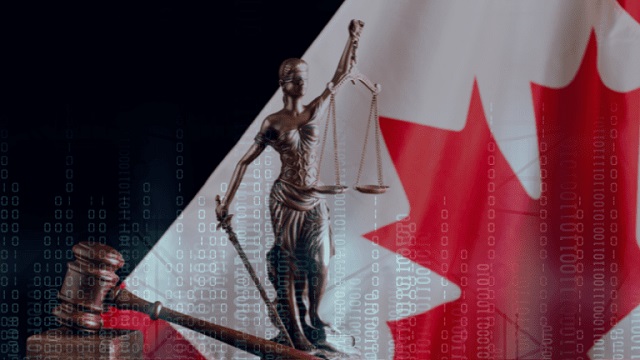
From the Macdonald Laurier Institute
By Leonid Sirota and Mark Mancini
When it comes to regulating the internet, Ottawa tells Canadians to simply “trust the experts.”
The federal government has pursued a far-reaching internet regulation agenda. This includes the Online Streaming Act (previously known as Bill C-11) and the Online News Act (previously known as Bill C-18). Both are ostensibly designed to force foreign online platforms – streaming ones such as Netflix, Disney+, and YouTube in the former case, Google and Facebook in the latter – to provide support, mainly but not exclusively financial, to Canadian cultural and journalistic producers. The most recent addition to this regulatory programme, Bill C-63, partly targets online platforms too, but its reach is broader. It seeks to prevent a range of “online harms” – from the distribution of child pornography to hate speech.
These legislative endeavours have attracted commentary from all corners, not least from Macdonald-Laurier Institute experts. Much of the discussion has been critical of the government’s policies on the ground of their unwisdom, immorality, and possible unconstitutionality.
But we would like to take a different tack here and focus not on the ends pursued but the means employed by C-11, C-18, and C-63: the empowerment of administrative agencies as rule-makers and arbiters of Canadians’ online world. While they purport to regulate new technologies, business models, and cultural forms, these policies are a throwback to an old philosophy of government that subverts fundamental constitutional principles: democracy, the separation of powers, and the rule of law.
It is worth beginning with a brief restatement of what these principles mean. Democracy means the exercise of political power – law-making, in particular – by either the people themselves or, more commonly, through elected representatives. The separation of powers means that the making and execution of laws are different functions, not to be confused or conflated, and that adjudication of disputes in accordance with the law is a separate function still. The rule of law is a complex idea, but perhaps the pithiest formulation of its core meaning belongs to economist and political philosopher F.A. Hayek: it “means that government in all its actions is bound by rules … which make it possible to foresee how the authority will use its coercive powers in given circumstances.”
Contrast this with the philosophy underpinning the government’s approach to internet regulation. This philosophy permeated the report of a panel commissioned by the federal government at the end of the last decade to propose reforms to Canada’s regulation of the internet. Published in January 2020, “Canada’s Communications Future: Time to Act” called for legislation that would “provide sufficient guidance to assist the [Canadian Radio-Telecommunications Commission (CRTC)] in the discharge of its duties, but sufficient flexibility for it to operate independently in deciding how to implement sector policy. To achieve this, legislative statements of policy should set out broadly framed objectives and should not be overly prescriptive.” Translation: the democratically elected Parliament should not bother with making actual rules; that would be the job of the bureaucrats at the CRTC. They know better – both what the rules should be and how to apply them. Parliament is their enabler, not their master, and the courts should defer to their judgments.
In fairness, the legislation ultimately enacted or considered by Parliament does not go quite as far in empowering the CRTC or a new Digital Safety Commission (DSC) at the expense of Parliament as that report had urged. But it does go far. Probably the most important example of this concerns the amenability of user content – the average TikTok video, rather than Netflix – to CRTC regulation. This was one of the major points of contention when Bill C-11 was before Parliament. The Bill itself – despite claims by the government to the contrary – quite clearly permitted the CRTC to regulate user content, though it did not require it to do so. Amendments to remove this discretionary power were roundly rejected at the government’s insistence, in favour of leaving the user content question open for decision by the CRTC – only for the government to issue a Policy Direction to the CRTC “not to impose regulatory requirements” on user content.
The real scope of the law, and hence the degree of its impact on the freedom of expression of ordinary Canadians, will thus be fleshed out through the interplay of policy directions from Cabinet and CRTC consultations and orders. The same goes for various other aspects of the Online Streaming Act, such as Canadian content and discoverability requirements to be imposed on online platforms. The Online News Act, had it functioned as intended, would similarly have given the CRTC the final say over the extent of the obligations of the platforms subject to it. (In reality, one of these two platforms instead banned the publication of news content, and to avoid the other doing the same thing, the government made a deal with it that eviscerated the act.) And under Bill C-63, the decisions as to whether an online platform’s policies are “adequate to mitigate the risk that users … will be exposed to harmful content” is similarly within the remit of the DSC, with little if any guidance from Parliament as to what is in fact required.
This way of doing things undermines parliamentary democracy as anyone, except some scholars of administrative law would understand it. The people elected to make laws do not, in fact, make them in any meaningful way. On the contrary, they pawn off responsibility for contentious policy choices to administrators; they enact no more than empty shells, politely described as “framework legislation,” full of blanks to be filled out later. This transgression against constitutional principle is compounded when Cabinet makes a mockery of the parliamentary process with its policy flip-flops, which can then be reversed by further Cabinet fiat. The excuse typically given for this dereliction of duty is that the problems to be addressed are too complex for parliamentarians to deal with, which only makes one wonder at their nerve to have put themselves forward to do a job they are concededly unqualified for in the first place.
Enthusiasts for the internet agenda may say that it remedies its democratic deficiencies by consulting with those subject to new registration requirements. Yet CRTC consultations on the Online Streaming Act provided no more than a shabby ersatz of what democracy is supposed to mean – debate and discussion in Parliament. The submission period was short, and “industry-focused.” The CRTC ended up issuing orders requiring registration on a range of internet services that meet a $10 million revenue threshold, and the government issued a policy direction to the CRTC instructing that user content not be regulated. The CRTC’s regulatory plan for the Online Streaming Act is still being developed, and will likely involve further decisions about the reach of registration requirements. Whether the DSC does any better – if and when it implements Bill C-63 – remains to be seen. But, in any case, consultations that only include industry players, or some nominal number of users, cannot replicate an engaged and informed Parliament that weighs competing interests. Nor can it replace an engaged and informed citizenry, holding politicians to account for their choices at the ballot box.
Separation of powers fares no better. Instead of Parliament making laws, independent prosecutors bringing charges, and independent courts ruling on them, the CRTC and DSC combine their broad rule-making powers with the ability to both jawbone and outright prosecute online platforms, and to rule on the charges. The Canadian Civil Liberties Association rightly laments “the vast authority bestowed upon” the DSC “to interpret the law, make up new rules, enforce them, and then serve as judge, jury, and executioner.”
Here again, proponents of administrative power think they have an answer. Instead of the old-fashioned institutions wielding divided powers, they say the modern world requires the government’s full authority to be concentrated in the hands of experts. Agencies like the CRTC and, presumably, the DSC have the skills and wisdom to deal with the complex and increasingly difficult online environment. This claim is attractive in part because the layman often cannot comprehend the size and scale of challenges that modern regulation confronts, while politicians are all too often happy to demonstrate their unseriousness and ignorance.
But, in addition to its other problems, the vision of expert administrators who know better is simply unwarranted by the facts. For example, Konrad von Finckenstein, former chair of the CRTC, has told a Senate committee studying Bill C-11 that the CRTC simply does not normally deal with matters of this nature; and that the CRTC will likely need to hire contractors to fulfil its mandate under the legislation. The CRTC is also, by its own admission, not really up to speed when it comes to the universe of online media it is required to regulate under the Online Streaming Act: it has invoked the need to gather information about podcasting to justify its far-reaching registration requirements for platforms that host them. As for the DSC, it will of course be an entirely new bureaucratic structure with no existing expertise at all. Perhaps the government will appoint experts to it. But it doesn’t have to. Bill C-63 imposes no requirements as to the qualifications of the DSC’s members other than their being Canadian citizens or permanent residents. Under the Canadian Radio-television and Telecommunications Commission Act, the same is also true of the CRTC.
Over-reliance on administrative regulation and enforcement undermines the rule of law too, by making the rules applicable to the internet uncertain and their application unpredictable. The legislation relies on vague terms that will only be fleshed out as the agencies that apply it go along, which will discourage innovation, chill expression, and incentivize platforms to take quick action against their users to avoid getting into trouble with the regulators. And if the victims of unfavourable rulings want to challenge them in actual courts, the Supreme Court’s precedents prevent judges from coming to their own independent assessment of what the law requires, but instead require them to yield to the bureaucrats’ interpretations unless these are not “merely” mistaken, but outright unreasonable. Even the requirements of the Canadian Charter of Rights and Freedoms are dissolved in this bureaucratic acid; from the supreme law of Canada, they are diluted into values that must, to be sure, be taken into account, but only as a factor among others.
All this may seem like legalistic pedantry propounded by academics who do not care about the pressing needs of contemporary society. But that impression would be mistaken. It is precisely the government’s disregard for Canada’s constitutional foundations that ultimately ensures that the rules produced for it by its administrative instrumentalities are out of touch.
Instead of legislation reflecting Canada’s public opinion as represented in Parliament, we are to be governed by rules drafted by unrepresentative bureaucrats, potentially influenced by special interest groups with a privileged access to them. Instead of the exercise of coercive power being channelled through institutions with limited remits keeping one another accountable, we are told to trust experts who cheerfully admit having no real expertise to speak of. And instead of the law being predictably and impartially applied by judges who are not invested in the government’s policy and do not depend on government goodwill for reappointment, the law, and the constitution itself, only count insofar as they are consistent with administrative need.
It may be that we are stuck with the administrative state. Although some scholars have made arguments to the contrary, we believe that, as a matter of law, Parliament is entitled to delegate very considerable policy-making powers to agencies such as the CRTC and the DSC. If the government is set on pursuing its regulatory agenda through the old-fashioned means of creating and empowering bureaucratic structures, the courts will not save us, even though, as we have argued elsewhere, they have become rather more skeptical of the administrative state’s claim to be the solution to all the problems of the modern world than they used to be until fairly recently.
But the government having the authority to do something does not mean that doing it would be a good idea. It, and we the citizens, should embrace the judiciary’s skepticism of the vision of government-by-administrator that characterizes the federal government’s plans. More to the point, we should recall what our most important constitutional principles mean. If we are not to erode them, we need to reject the means the government is proposing to employ, as well as, arguably, the ends it is pursuing.
Leonid Sirota is Senior Fellow with the Macdonald-Laurier Institute, and an Associate Professor in the School of Law at the University of Reading, in the United Kingdom, where he teaches public law. His research interests include the rule of law, constitutional interpretation, administrative law, the freedoms of conscience and expression, election law, and other aspects of Canadian and comparative public law.
Mark Mancini, a Senior Fellow with the Macdonald-Laurier Institute, is a Ph.D. candidate at the University of British Columbia, Peter A. Allard School of Law. He holds a J.D. from the University of New Brunswick, Faculty of Law, and an LL.M. from the University of Chicago Law School.
Business
Canada’s struggle against transnational crime & money laundering
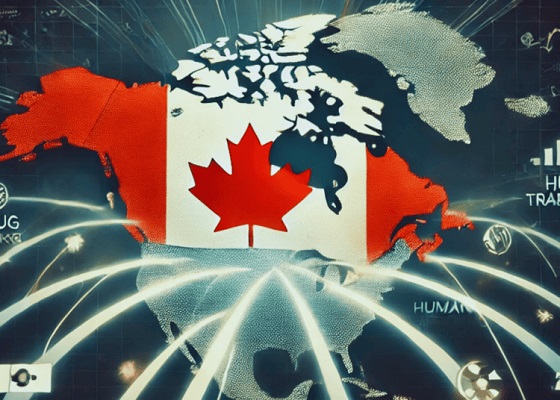
From the Macdonald-Laurier Institute
By Alex Dalziel and Jamie Ferrill
In this episode of the Macdonald-Laurier Institute’s Inside Policy Talks podcast, Senior Fellow and National Security Project Lead Alex Dalziel explores the underreported issue of trade-based money laundering (TBML) with Dr. Jamie Ferrill, the head of financial crime studies at Charles Sturt University in Canberra, Australia and a former Canada Border Services Agency officer.
The discussion focuses on how organized crime groups use global trade transactions to disguise illicit proceeds and the threat this presents to the Canada’s trade relationship with the US and beyond.
Definition of TBML: Trade-based money laundering disguises criminal proceeds by moving value through trade transactions instead of transferring physical cash. Criminals (usually) exploit international trade by manipulating trade documents, engaging in phantom shipping, and altering invoices to disguise illicit funds as legitimate commerce, bypassing conventional financial scrutiny. As Dr. Ferrill explains, “we have dirty money that’s been generated through things like drug trafficking, human trafficking, arms trafficking, sex trafficking, and that money needs to be cleaned in one way or another. Trade is one of the ways that that’s done.”
A Pervasive Problem: TBML is challenging to detect due to the vast scale and complexity of global trade, making it an attractive channel for organized crime groups. Although global estimates are imprecise, the Financial Action Task Force and The United Nations Office on Drugs and Crime (UNODC) suggests 2-5% of GDP could be tied to money laundering, representing trillions of dollars annually. In Canada, this could mean over $70 billion in potentially laundered funds each year. Despite the scope of TBML, Canada has seen no successful prosecutions for criminal money laundering through trade, highlighting significant gaps in identifying, investigating and prosecuting these complex cases.
Canada’s Vulnerabilities: Along with the sheer volume and complexity of global trade, Canada’s vulnerabilities stem from gaps in anti-money laundering regulation, particularly in high-risk sectors like real estate, luxury goods, and legal services, where criminals exploit weak oversight. Global trade exemplifies the vulnerabilities in oversight, where gaps and limited controls create substantial opportunities for money laundering. A lack of comprehensive export controls also limits Canada’s ability to monitor goods leaving the country effectively. Dr. Ferrill notes that “If we’re seen as this weak link in the process, that’s going to have significant implications on trade partnerships,” underscoring the potential political risks to bilateral trade if Canada fails to address these issues.
International and Private Sector Cooperation: Combating TBML effectively requires strong international cooperation, particularly between Canada and key trade partners like the U.S. The private sector—including freight forwarders, customs brokers, and financial institutions—plays a crucial role in spotting suspicious activities along the supply chain. As Dr. Ferrill emphasizes, “Canada and the U.S. can definitely work together more efficiently and effectively to share and then come up with some better strategies,” pointing to the need for increased collaboration to strengthen oversight and disrupt these transnational crime networks.
Looking to further understand the threat of transnational organized crime to Canada’s borders?
Check out Inside Policy Talks recent podcasts with Christian Leuprecht, Todd Hataley and Alan Bersin.
To learn more about Dr. Ferrill’s research on TBML, check out her chapter in Dirty Money: Financial Crime in Canada.
Immigration
ISIS and its violent Central Asian chapter are threatening Canada and the West with jihad. Hussain Ehsani for Inside Policy
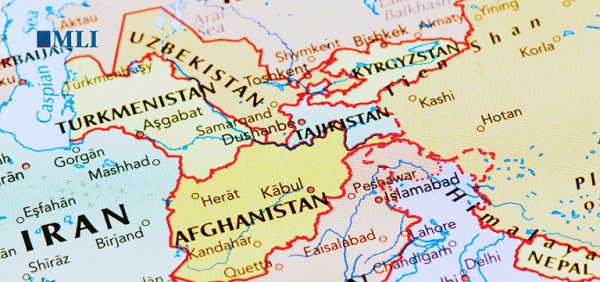
From the Macdonald Laurier Institute
By Hussain Ehsani
Recent terrorism-related arrests in Canada and the wider West are evidence of the resurgence of ISIS, and especially its ultra-violent Afghanistan wing… recently revealed internal memos by Canada’s Integrated Terrorism Assessment Centre (ITAC) highlighted ISIS’s growing role in inspiring domestic terrorism
Ten years ago, the Islamic State of Iraq and Syria waged a holy war that threatened to engulf the wider Middle East. At its peak, ISIS conquered nearly 200,000-square-kilometres of Iraq and Syria, inspiring thousands of jihadis to join its crusade against the West.
It took a global coalition of 87 nations and groups, led by the United States and including Canada, to defeat Daesh for good. By December 2017, the damage was decisive: ISIS had lost more than 95 per cent of its territory. The coalition members celebrated the defeat of ISIS and thought it could no longer pose a threat, in the Middle East or anywhere else.
The moment lasted only a short time.
Recent terrorism-related arrests in Canada and the wider West are evidence of the resurgence of ISIS, and especially its ultra-violent Afghanistan wing. At the same time, recently revealed internal memos by Canada’s Integrated Terrorism Assessment Centre (ITAC) highlighted ISIS’s growing role in inspiring domestic terrorism, and in particular, potential “lone Wolf” attacks against Canada’s Jewish community.
The memos – issued on June 24 and July 10, 2024, and later obtained by media – were prescient: On July 31, Canadian police detained two alleged ISIS-affiliated men in Richmond Hill, Toronto, apparently based on a tip from French intelligence. In September, the RCMP in Quebec – working with the FBI – arrested a Pakistani national on a student visa for allegedly plotting an attack on a Jewish centre in Brooklyn, New York. These events were especially shocking since it was widely believed that ISIS was confined to Iraq and Syria. But ISIS is clearly influencing a new generation of terrorists around the world. Indeed, it’s suspected that ISIS inspired, and possibly directed, a plot to attack the Jewish community in Ottawa last February. Police arrested two Ottawa youths in relation to the alleged plot and charged them with attempted murder.
American authorities have also thwarted ISIS schemes, resulting in the arrest of ISIS-Tajiki operatives in the US earlier this year. The arrests continue: On October 7, the FBI apprehended an Afghan national and a juvenile co-conspirator for allegedly planning an attack under the Islamic State banner on November 5 – the day of the US presidential elections.
These US arrests point to a new trend: the rise and global reach of the Afghan branch of ISIS, known as the Islamic State-Khorasan Province (ISKP). Some background is necessary. ISIS officially emerged in 2014, following rapid territorial gains in eastern Syria and northwestern Iraq. Rooted in the ideology of Salafi Jihadism, ISIS sought to establish a “Caliphate” governed by a strict interpretation of Sharia law. The group declared its leader, Abu Bakr al-Baghdadi, as Caliph in June 2014 after capturing Mosul, Iraq’s second-largest city. This marked the height of ISIS’s power, controlling large swaths of Syria and Iraq.
As ISIS entrenched itself, it began expanding its influence beyond Iraq and Syria. Various affiliates, known as “provinces” or “wilayat,” emerged worldwide. Pledging allegiance to the central ISIS leadership, these groups dedicated themselves to establishing a global Islamic State.
That is one reason for the group’s resilience and recent resurgence. The ISKP was one of the most deadly branches to emerge. Founded in southeastern Afghanistan in 2015 on the border with Pakistan, ISKP immediately sought closer ties with the core ISIS group in Syria and Iraq to gain legitimacy and embolden its fighters and middle-rank commanders to conquer more territory. Those efforts came up short, and ISKP failed in its first years to win ISIS’s support.
Since then, ISKP has redoubled its efforts to impress its ISIS masters – and in many ways, it has succeeded. The group is now among the strongest of ISIS’s adherents.
Turning Point
The collapse of the former Afghan Government on August 15, 2021, was the turning point, when a host of transnational extremist fighters were released from prisons of Afghanistan. Aside from rejoicing about the withdrawal of foreign troops from Afghanistan, they prepared to take up their “holy duty” to expand ISIS’s regime. ISKP initially in 2015 drew its fighters from disaffected and wayward elements of the Taliban, Haqqani network, and Pakistani Taliban. The release of an additional cohort of Salafists (Sunni fundamentalists) aided its recruitment.
ISKP moved quickly to expand its influence and operations. The first attack in this new era was devastating: it stormed the Abbey Gate of the Kabul Airport on August 26, 2021, killing 170 Afghan civilians and 13 US soldiers. The US Department of Defense later released a report that Abdul Rahman al-Logari, one of the prisoners released on the day of Kabul collapse, was behind the Abbey Gate attack.
The message was clear – ISKP was on the march.
ISKP on the International Stage
To gain “formal” admission to the ranks of ISIS’s provinces, ISKP would have to show initiative and capability, not just in Afghanistan but in the wider territory of Khorasan: Iran, Tajikistan, Uzbekistan, and the eastern part of Turkmenistan.
To do so, it had to find new targets. Traditionally, the Hazara community, the most persecuted ethnicity in Afghanistan, was the main target for Islamist groups, along with former Afghan security forces. They remain primary victims. However, ISKP’s range of targets and ability to strike them has grown. It added new targets in Afghanistan, attacking the Russian embassy in Kabul in September 2022, and a Chinese facility in December of the same year. Then it started reaching beyond the borders of Afghanistan: ISKP has carried out terrorist attacks in Central Asia and plotted a number of them in Pakistan.
Targets even farther away have now been hit. In January 2024, ISKP executed a complex attack in Kerman, Iran, at an event commemorating Qasem Sulaimani, the former commander of the Iranian Islamic Revolutionary Guard Corps (IRGC) Qods Force, killed by US forces in 2020. On March 22, 2024, it hit a concert hall in Moscow – an operation that took the international community by complete surprise.
These operational successes mattered, but ISIS’s core leaders in Syria and Iraq demanded signs of ideological subservience as well. Under the leadership of Sanaullah Ghafari (also known as Dr. Shahab al-Muhajir), ISKP worked hard to prove that its propaganda machine is an engine of ISIS Salafist ideology.
ISKP uses fluency in a variety of languages, including Urdu, Russian, Tajiki, Uzbeki, Turkish, English, and Pashto, to spread its message. It seeks to extend its ideology to other fighters in the region in order to recruit transnational Salafi Jihadists. It has already recruited a vast number of terrorists from the ranks of the Islamic Movement of Uzbekistan in the north of Afghanistan. ISKP also exploited propaganda and demand from the diaspora of Uzbekistan and Tajikistan to plot attacks against Western countries.
The attacks and ideological efforts seem to have worked. ISKP now appears to have become the operational wing of the core ISIS group. After the ISKP attack on Moscow, an ISIS spokesman released a 41-minute audio message praising the attack by “Mujahidin” and called on other “dormant” provinces of the “Caliphate” to rise up and follow ISKP’s example.
The terror spreads
ISIS leader Abu Hafs al-Hashimi al-Quraishi has more work in mind for his prized ISKP group. His priorities include freeing jihadists detained in Syria and attacking targets in Europe and North America.
In Syria, Al-Quraishi has encouraged ISIS terrorists to redouble efforts to attack the Syrian Democratic Forces, a US-backed Kurdish militia in the country’s northeast, and try to break detained comrades out of SDF-run prisons. These facilities host thousands of ISIS fighters, including women and children. Given the success of ISKP’s operations and recruitment, ISIS is likely trying to implement the same tactic of jailbreaks in Kurdish territory in Syria and Iraq, to replenish its ranks.
ISIS spokesmen have also called for all Muslims to attack Christians and Jews in the broader West.
In September 2024, Türkiye’s domestic security agency (MIT) arrested Abuzar Al Shishani, who allegedly was plotting an attack on Santa Maria Italian Church in Istanbul in early January 2025. According to MIT, ISKP recruited him in 2021. The arrests in Canada, the US, and Türkiye are proof that ISKP’s reach is growing.
How can Canada fight back?
Canada and its allies in the West must act now to counter the terrorist threat posed by ISKP and ISIS. Fortunately, the RCMP and other Canadian police forces halted the recent spate of planned domestic terror attacks. However, stringent immigration screening is also crucial to keeping Canada and its allies safe. The Canada Border Services Agency needs to be ready to deal with the ISIS/ISKP threat.
To that end, Public Safety Canada should examine ways to enhance inter-agency targeting and intelligence sharing. A task force consisting of Immigration, Refugee and Citizenship Canada, Canadian Heritage, the Canadian Revenue Agency, and FINTRAC – given their respective roles in immigration processing, countering disinformation and anti-terrorist financing – could help to ensure maximum coordination against the group.
Canada must also guard against the threat ISKP/ISIS poses to religious and minority communities in the country. ISIS’s call to target Jewish and Christian communities presents a special challenge. The Jewish community is particularly vulnerable due to the rampant antisemitism seen at pro-Hamas, Hezbollah, and Iran rallies across Canada. But Christian sites, like churches, are also vulnerable. ISKP/ISIS are also likely to target Muslim groups that speak against its violent ideology.
Canada should collaborate with international partners to support communities and groups opposed to ISKP/ISIS. These include the Hazara, Kurdish, and Yazidi communities in Afghanistan and Kurdistan, as well as allies in the Kurdistan Regional government, and the Syrian Democratic Forces. Canada should also support initiatives led by the Kingdom of Saudi Arabia and other Gulf Cooperation Council countries to strengthen the voice of moderate Islam in the Middle East and Central Asia. Such initiatives require careful diplomacy with allies and a range of partners. That is what Canada will require to counter the evolving threat of ISIS and ISKP.
Hussain Ehsani is a Middle East affairs analyst with expertise on the Islamic State and al-Qaeda in Iraq and Afghanistan. He is currently exploring the foreign policy relationship between Saudi Arabia and Canada. In addition to MLI, he also contributes to the Jerusalem Post, BBC Persian, and The Hill.
-

 Brownstone Institute2 days ago
Brownstone Institute2 days agoThe Most Devastating Report So Far
-

 Business2 days ago
Business2 days agoCarbon tax bureaucracy costs taxpayers $800 million
-

 ESG1 day ago
ESG1 day agoCan’t afford Rent? Groceries for your kids? Trudeau says suck it up and pay the tax!
-

 Daily Caller1 day ago
Daily Caller1 day agoLos Angeles Passes ‘Sanctuary City’ Ordinance In Wake Of Trump’s Deportation Plan
-

 John Stossel1 day ago
John Stossel1 day agoGreen Energy Needs Minerals, Yet America Blocks New Mines
-
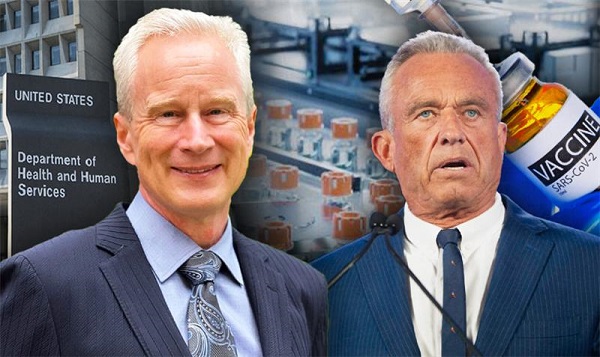
 COVID-192 days ago
COVID-192 days agoDr. McCullough praises RFK Jr., urges him to pull COVID shots from the market
-

 MAiD2 days ago
MAiD2 days agoOver 40% of people euthanized in Ontario lived in poorest parts of the province: government data
-

 Alberta1 day ago
Alberta1 day agoProvince considering new Red Deer River reservoir east of Red Deer


